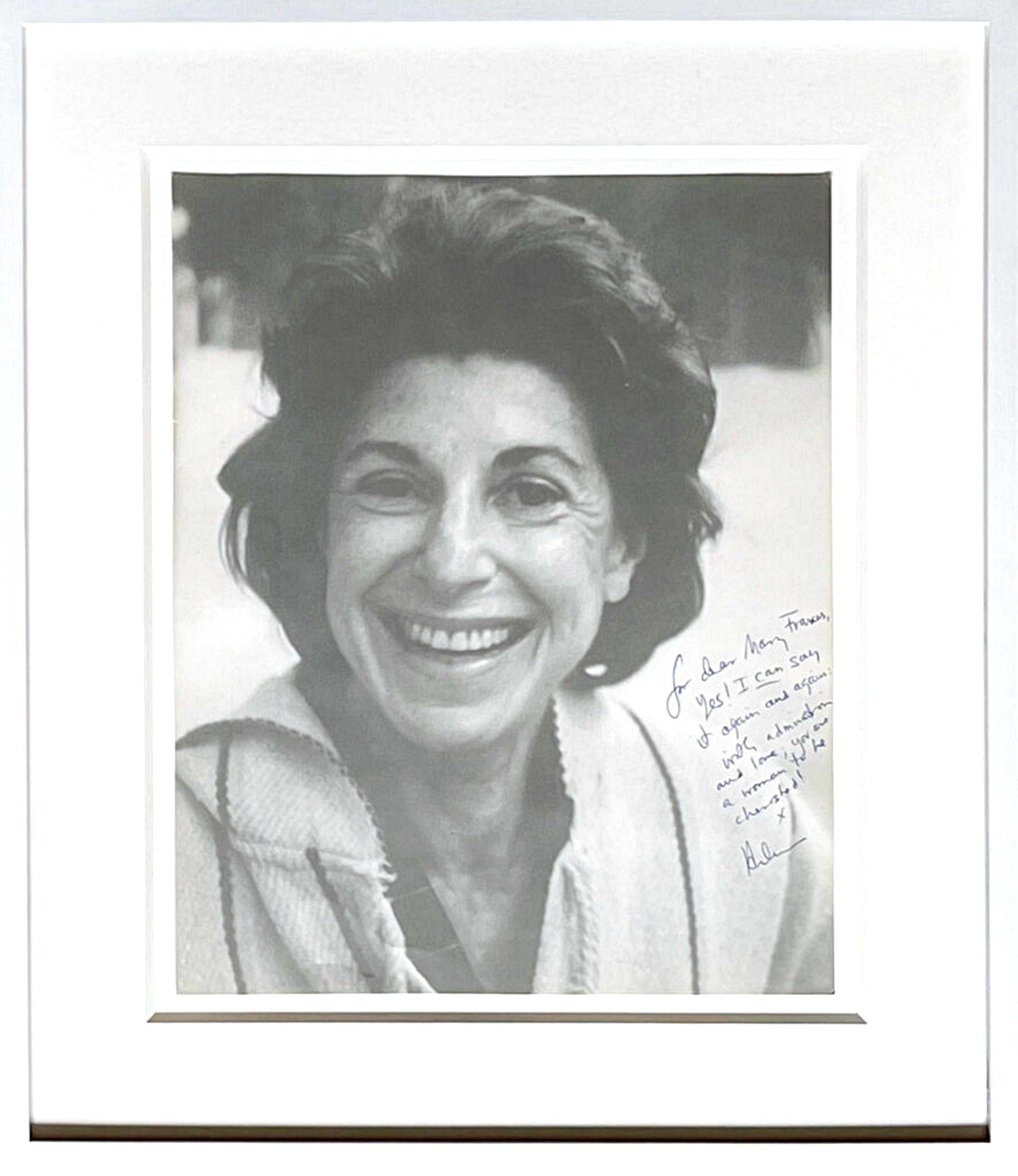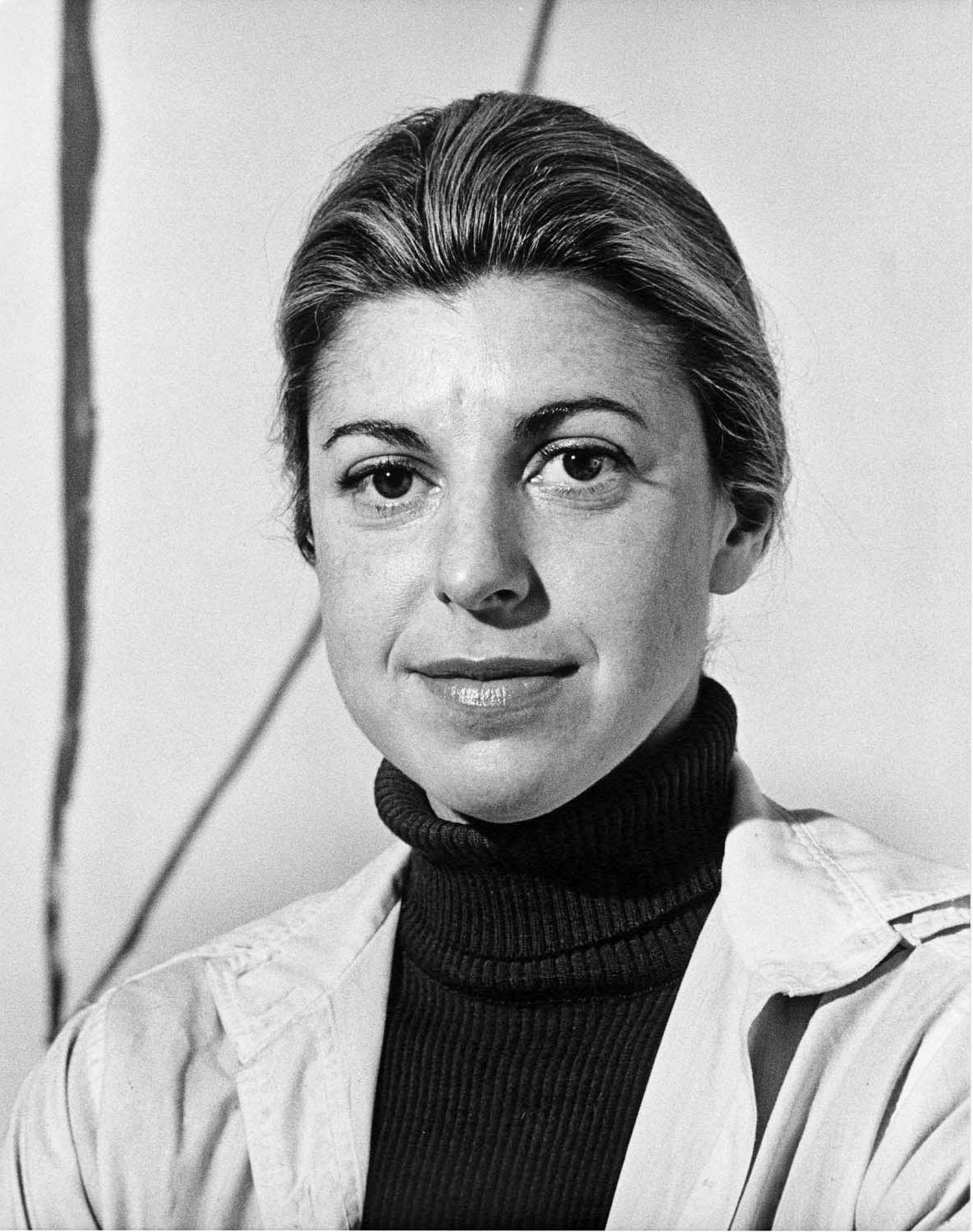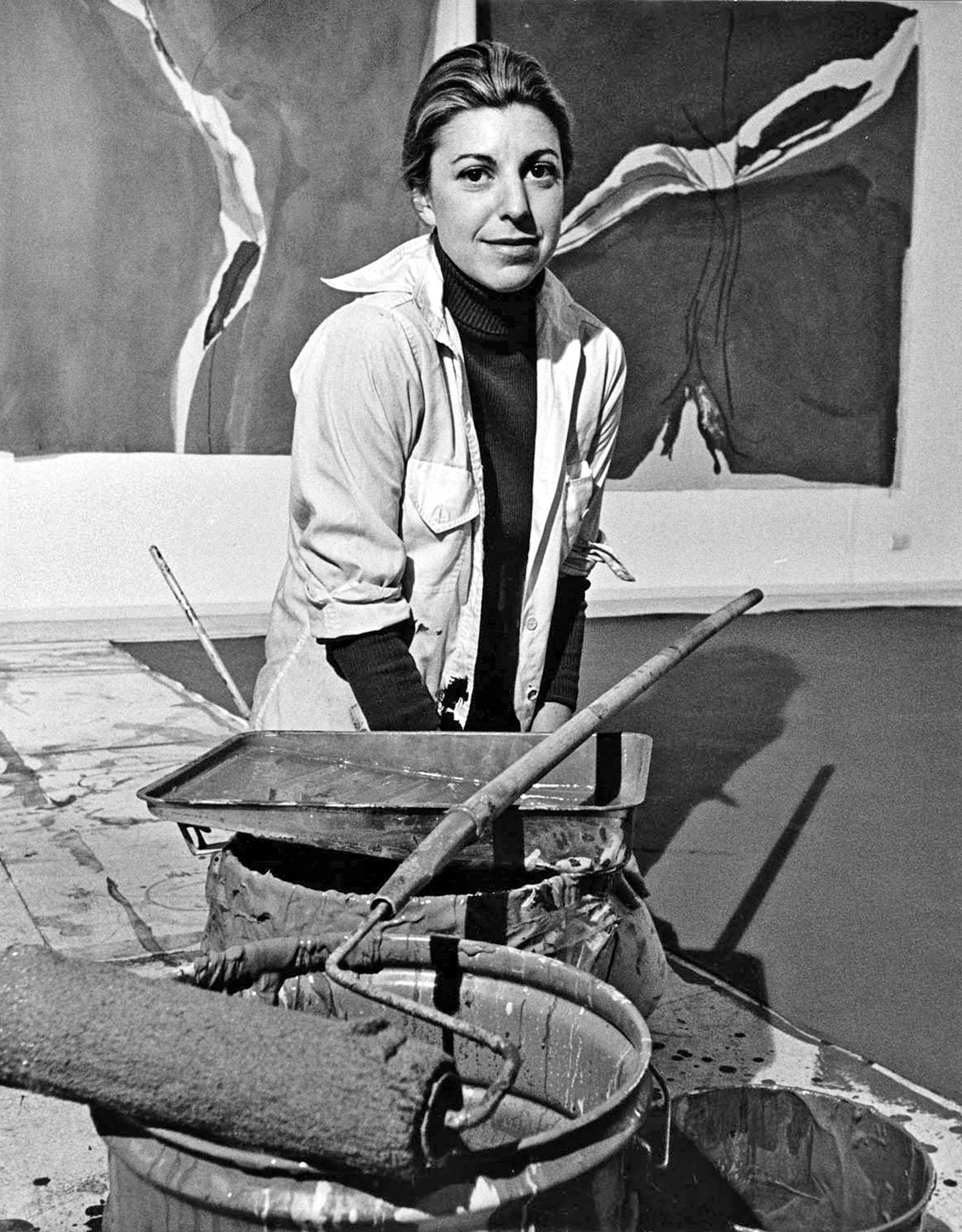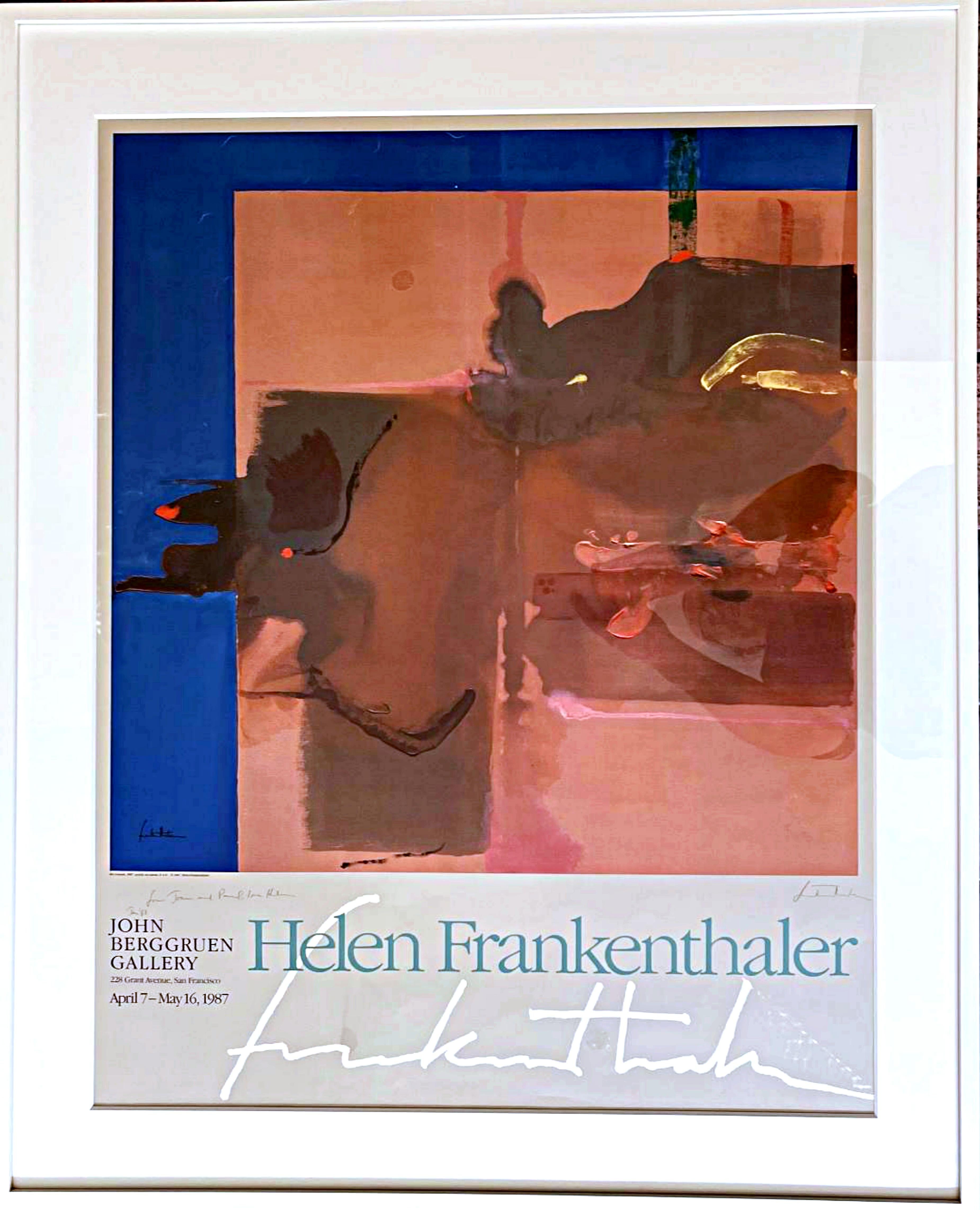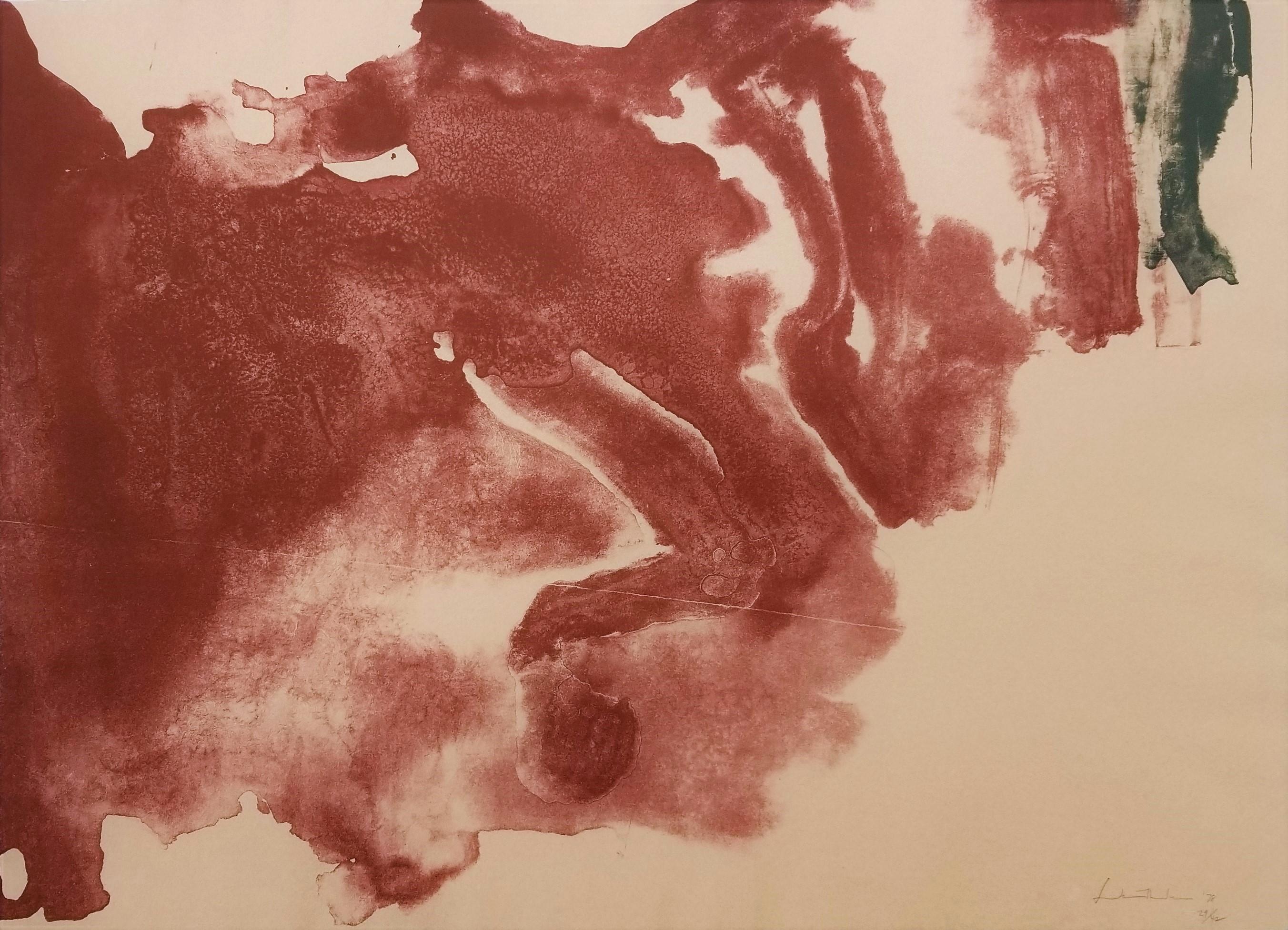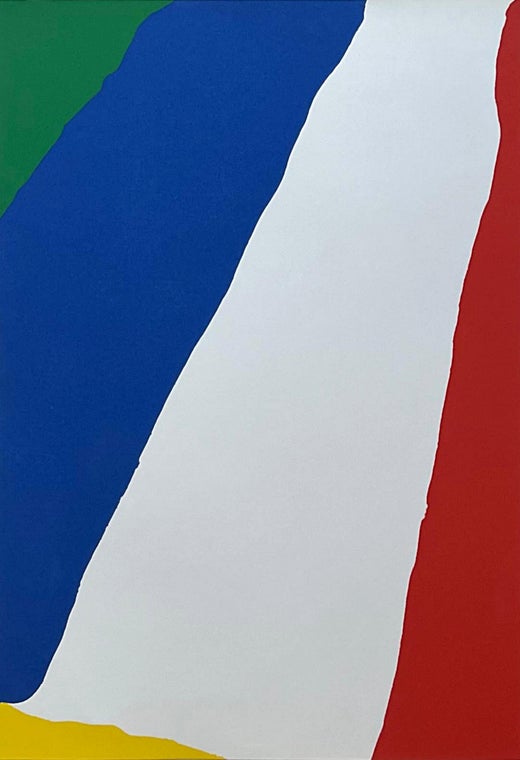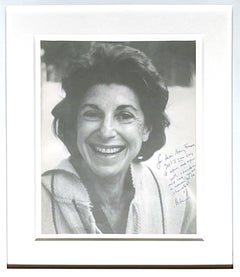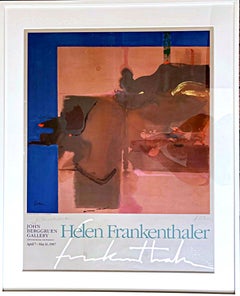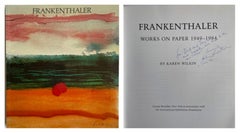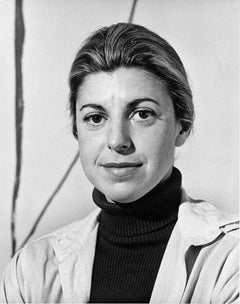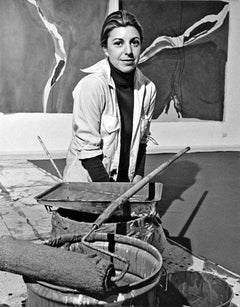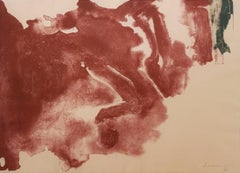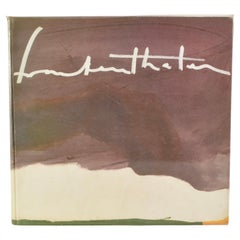This work features a photographic portrait of Helen Frankenthaler, taken by renowned musician and photographer Jim Arkatov, founder of the Los Angeles Chamber Orchester, and author of the 1998 book "The Creative Personality".
The photograph is hand signed and dated '92 by Jim Arkatov. Framed alongside the photograph is a typed letter, hand signed in marker with a personal annotation ("Thanks again!!") by Helen Frankenthaler, thanking Mr. Arkatov for sending her glossy prints of his photograph and stating that she looks forward to seeing his book.
Arkatov's original signed portrait, along with Frankenthaler's original signed letter, are elegantly framed in a museum quality wood frame under UV plexiglass. There is also a die-cut window in the back of the frame to reveal Arkatov's signature on the back of his photograph.
Measurements:
Framed
14.25 inches (vertical) by 19.75 inches (horizontal) by 1.75 inches (depth)
Photographic portrait of Helen Frankenthaler:
9.25 inches (vertical) by 7.25 inches (horizontal)
Letter from Frankenthaler to Arkatov:
7 inches (vertical) by 6.25 inches (horizontal)
This collection was acquired from the Estate of Jim Arkatov. Below is an excerpt from his 2019 obituary in the Los Angeles Times:
"...His was an immigrant’s story, a child from Russia who landed in San Francisco, befriended violinist Isaac Stern — whose fame was still to come — took up the cello and decided to pour his life into making music.
James Arkatov found work with the Pittsburgh Symphony Orchestra and then with the philharmonic in San Francisco before coming to L.A. as a Hollywood studio musician who worked on movie soundtracks and backed up Ella Fitzgerald on some of her more memorable recordings, such as “Ella Fitzgerald Sings the George and Ira Gershwin Song Books.”
Amazed at the dazzling talent around him in Hollywood, he came up with a simple but lasting idea — form their own orchestra. The Los Angeles Chamber Orchestra made its debut on an April evening in 1968, as hundreds squeezed into the newly built Mark Taper Forum. Arkatov played cello as usual as the ensemble drifted through the works of Mozart, Vivaldi, Haydn and other legends of the classics who’d written music specially for smaller orchestras.
Arkatov, who lived long enough to see the orchestra celebrate its 50th anniversary, died Saturday at his home in Los Angeles. He was 98.
“The orchestra represented a contextualized part of L.A. that had simply never been captured,” said his son, Alan Arkatov, the chair of the education and technology program at USC’s Rossier School of Education. “L.A. simply didn’t have this type of ensemble.” Arkatov was born in Odessa, Russia, on July 17, 1920, and moved around Europe before sailing with his family to San Francisco, where his father opened a photo studio. One of his early childhood friends was Stern, who would become an international star who performed on the world’s biggest stages. Arkatov, who began playing the cello when he was 9, formed a string quartet with Stern when they were teens.
After stints as a cellist in San Francisco, Pittsburgh and Indianapolis, Arkatov became a member of the NBC Orchestra, the studio musicians who supplied the soundtracks for the movies that kept Hollywood humming.
Pulling from the talent of Hollywood like an NFL team on draft day, he cobbled together a roster capable of handling the delicate and nuanced music written for chamber orchestras. In contrast to the L.A. Phil, which filled the stage with 100 or so musicians, the chamber orchestra was but half that size. The idea was to create a group that would play works written expressly for such an orchestra, many of them from the Baroque era.
“The ensemble was never meant to compete with the Philharmonic,” Arkatov’s son said...."
Helen Frankenthaler Biography:
Helen Frankenthaler (1928-2011), whose career spanned six decades, has long been recognized as one of the great American artists of the twentieth century. She was eminent among the second generation of postwar American abstract painters and is widely credited for playing a pivotal role in the transition from Abstract Expressionism to Color Field painting. Through her invention of the soak-stain technique, she expanded the possibilities of abstract painting, while at times referencing figuration and landscape in unique ways. She produced a body of work whose impact on contemporary art has been profound and continues to grow.
Frankenthaler was born on December 12, 1928, and raised in New York City. She attended the Dalton School, where she received her earliest art instruction from Rufino Tamayo. In 1949 she graduated from Bennington College, Vermont, where she was a student of Paul Feeley. She later studied briefly with Hans Hofmann.
Frankenthaler’s professional exhibition career began in 1950, when Adolph Gottlieb selected her painting Beach (1950) for inclusion in the exhibition titled Fifteen Unknowns: Selected by Artists of the Kootz Gallery. Her first solo exhibition was presented in 1951, at New York’s Tibor de Nagy Gallery, and that year she was also included in the landmark exhibition 9th St. Exhibition of Paintings and Sculpture.
In 1952 Frankenthaler created Mountains and Sea, a breakthrough painting of American abstraction for which she poured thinned paint directly onto raw, unprimed canvas laid on the studio floor, working from all sides to create floating fields of translucent color. Mountains and Sea was immediately influential for the artists who formed the Color Field school of painting, notable among them Morris Louis and Kenneth Noland.
As early as 1959, Frankenthaler began to be a regular presence in major international exhibitions. She won first prize at the Premiere Biennale de Paris that year, and in 1966 she represented the United States in the 33rd Venice Biennale, alongside Ellsworth Kelly, Roy Lichtenstein, and Jules Olitski. She had her first major museum exhibition in 1960, at New York’s Jewish Museum, and her second, in 1969, at the Whitney Museum of American Art, followed by an international tour.
Frankenthaler experimented tirelessly throughout her long career. In addition to producing unique paintings on canvas and paper, she worked in a wide range of media, including ceramics, sculpture, tapestry, and especially printmaking. Hers was a significant voice in the mid-century “print renaissance” among American abstract painters, and she is particularly renowned for her woodcuts. She continued working productively through the opening years of this century.
Frankenthaler’s distinguished, prolific career has been the subject of numerous monographic museum exhibitions. The Jewish Museum and Whitney Museum shows were succeeded by a major retrospective initiated by the Modern Art Museum of Fort Worth that traveled to The Museum of Modern Art, New York, the Los Angeles County Museum of Art, and the Detroit Institute of Arts, MI (1989); and those devoted to works on paper and prints organized by the National Gallery of Art, Washington, D.C. (1993), among others.
Select recent important exhibitions have included Painted on 21st Street: Helen Frankenthaler from 1950 to 1959 (Gagosian, NY, 2013); Making Painting: Helen Frankenthaler and JMW Turner (Turner Contemporary, Margate, UK, 2014); Giving Up One’s Mark: Helen Frankenthaler in the 1960s and 1970s (Albright-Knox Art Gallery, Buffalo, NY, 2014–15); Pretty Raw: After and Around Helen Frankenthaler (Rose Art Museum, Brandeis University, Waltham, MA, 2015); As in Nature: Helen Frankenthaler, Paintings and No Rules: Helen Frankenthaler Woodcuts (The Clark Art Institute, Williamstown, MA, 2017); Abstract Climates: Helen Frankenthaler in Provincetown (Provincetown Art Association and Museum, MA, 2018, traveled to Parrish Art Museum, Water Mill, NY, 2019); and Pittura/Panorama: Paintings by Helen Frankenthaler, 1952–1992 (Museo di Palazzo Grimani, Venice, 2019), the first presentation of the artist’s work in Venice since its 1966 appearance at the 33rd Venice Biennale.
From November 2019 – November 2021, Tate Modern, London, presented a display of five works from the first three decades of Frankenthaler’s career, featuring four loans and one recently gifted work from the Helen Frankenthaler Foundation.
Frankenthaler has been the subject of three major monographs: Frankenthaler, by Barbara Rose (1972); Frankenthaler, by John Elderfield (1989); and Frankenthaler: A Catalogue Raisonné, Prints 1961–1994, by Suzanne Boorsch and Pegram Harrison (1996), as well as numerous scholarly articles on her work by renowned art historians, curators, and critics. The authors in her many substantial exhibition catalogues include Carol Armstrong, Carl Belz, Julia Brown, E.A. Carmean, Jr., Bonnie Clearwater, Ruth Fine, Judith Goldman, Eugene C. Goossen, Pepe Karmel, Frank O’Hara, Francine Prose, and Karen Wilkin.
In 2015 Gagosian published "The heroine Paint": After Frankenthaler, edited by art historian and curator Katy Siegel, which explores Frankenthaler’s painting and expands its focus to include the immediate social and artistic context of her work, then traces artistic currents as they move outward in different directions in the ensuing decades. The book collects six scholarly essays, six short texts from contemporary artists, and reprints of historical writing.
Frankenthaler was the recipient of numerous honorary doctorates, honors, and awards. She received the National Medal of Arts in 2001; served on the National Council on the Arts of the National Endowment for the Arts from 1985 to 1992; was a member of the American Academy of Arts and Letters (1974–2011), where she served as Vice-Chancellor in 1991; and was appointed an Honorary Academician of the Royal Academy of Arts, London, in 2011.
Important works by Frankenthaler may be found in major museums worldwide.
-Courtesy Helen Frankenthaler Foundation
